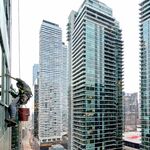MisterF
Senior Member
This isn't the choice we're facing though. Bike lanes improve economic output and their effect on car traffic is negligible at most. So the choice is:Bike lanes save lives - absolutely. but if the bike lane triples congestion ,reducing economic output - is it worth it for the added safety for a handful of cyclists? that's a moral decision we as society have to make. It's not a professional liability for an engineer like signing off on the structural design of a bridge may be.
-remove bike lanes and get the same amount of congestion, worse economic output and worse safety
-keep bike lanes and get the same amount of congestion, better economic output and better safety.
A negligible difference at most and often no difference at all. And that's only for car traffic, which should be the lowest priority mode of transportation in a city.Removing bike lanes from individual streets will reduce congestion on those streets; at least in theory.
No, sometimes travel times have been reduced.Every time the installation of a bike lane is researched, they invariably conclude that commutes/trips will increase in time by some amount.
You're implying that a growing city should have an increasing number of vehicle lanes. This is completely wrong. Cars are an extremely inefficient use of space and car dependence is a net drain on a city's finances. A growing city needs an increasing about of mass transit, cycling infrastructure, and pedestrian space. Not more car lanes.Roads have been static for 40+ years, meanwhile the city has grown very much over that same time period.
Removing traffic lanes in favour of bike lanes does not make sense in this context.





